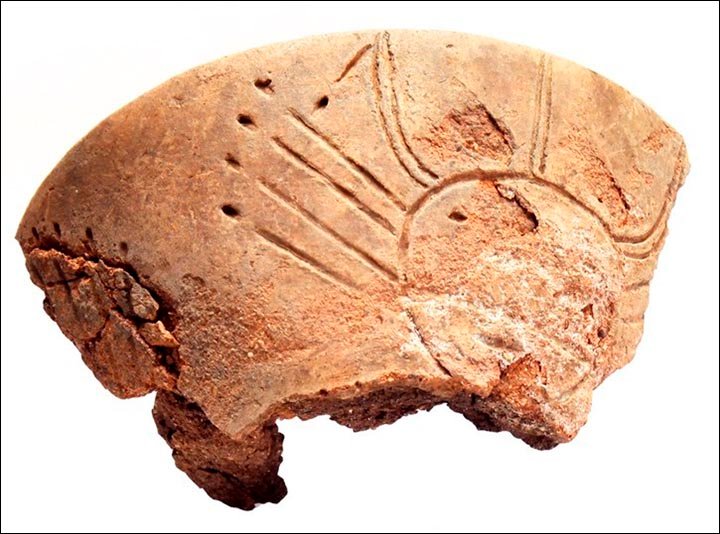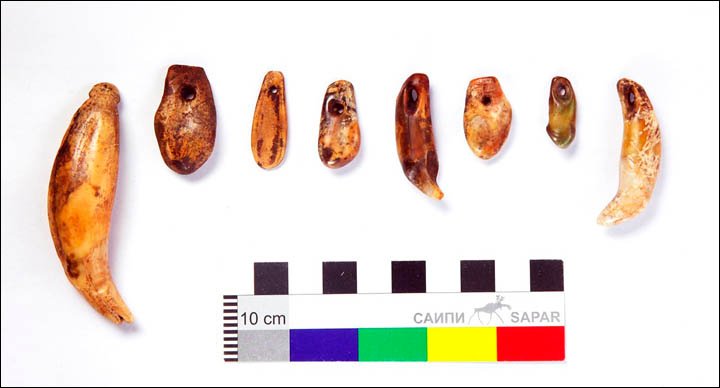MessageToEagle.com – Archaeologists excavating in Siberia have found a grave containing a 4,500-year-old skeleton of a noblewoman. This intriguing ancient skeleton belongs to a woman who was a member of the mysterious ancient Okunev Culture.
Inside the grave, scientists also came across the woman’s valuable treasures that include an incense burner decorated by solar symbols, 1,500 beads that once adorned her costume, and 100 pendants made from animal teeth.

Mystery Of The Ancient Okunev Culture
The Okunev people are seen as the Siberian ethnic grouping most closely related to Native Americans.
According to some experts, it was ancestors of the Okunevs who populated America, evidently using primitive boats to venture to the ice-covered Beringia land bridge some 12,600 years ago.
The mysterious ancient culture was ‘unparalleled’ in Siberia in terms of its artistic richness and diversity.

Precious Ancient Artifacts And Child Skeleton Found Inside The Grave
The location where the finds were made is known as the Itkol II burial site, in the Shira district of Khakassia.
Inside the grave there was also a skeleton of an ancient child and several precious artifacts that offer a wealth of clues about the life of these ancient people.
The head of the expedition Dr Andrey Polyakov said the grave of the ‘noblewoman’ dated back to the Early Bronze Age, between the 25th and 18th centuries BC.
“For such an ancient epoch, this woman has a lot of items in her grave. We have not encountered anything like this in other burials from this time, and it leads us to suggest that the items in her grave had some ritual meaning.
See also:
Tomb Of Noblewoman Lady Sattjeni Unearthed 3,800 Years After Her Death
Ancient Unsolved Mysteries Of Siberia – A Place Full Of Secrets
Siberia Had A Major Skull Surgery Center 2,500 Years Ago
We hope to get even more rare and spectacular finds next year, when will continue to study this unique (burial) mound and open the central burial plot,” he said.
A Noblewoman With Special Status
Archeologists believe the woman ‘enjoyed a special status during her lifetime’, as indicated by around 100 decorations made from the teeth of different animals, items carved from bone and horn, two jars, cases with bone needles inside, a bronze knife, and more than 1,500 beads that embellished her funeral costume.
There is particular excitement about the incense burner because it contains sun-shaped faces which match previously-discovered ancient rock art in Siberia. The clay incense burner bearing three sun-shaped facial images, recovered from the grave, is the most important find of all,’ he said.
‘Its importance is hard to overestimate. All such images previously discovered had been found only on cliffs or separate stones. Now there is the prospect to find out when they were made.’
He made clear: ‘Now, thanks to our current research, we can definitely say that these rock arts were made by the representatives of the Okunev culture.’ After precise dating and restoration, the incense burner will be exhibited at the world famous Hermitage Museum in St Petersburg, he said.
Another find is a stone slab with a rare image of a bull having a long rectangular body. These are not common in southern Siberia, but are known on the territory of modern-day Kazakhstan. Archeologists see this as an indication that Okunev people may have migrated to Khakassia from the south.
There is obviously still a lot more to be learned about the mysterious ancient Okunev Culture and future findings will undoubtedly shed more light on the lives and customs of these ancient people.
MessageToEagle.com






